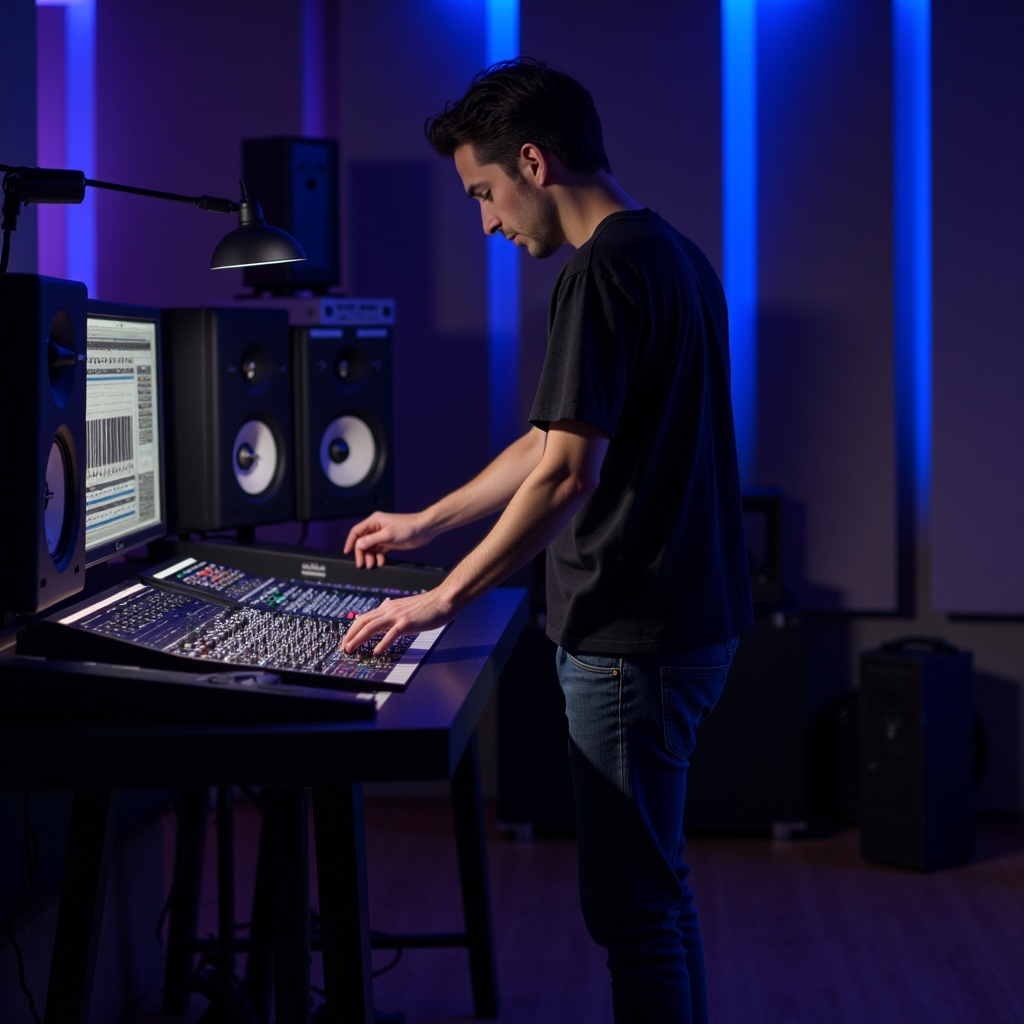In the eclectic neighborhood of Silver Lake, Los Angeles, behind the doors of a modern minimalist loft, sits a treasure trove of musical history. Here, acclaimed music producer Liam Moon houses his legendary vinyl collection—rare first-press albums that have not only soundtracked his life but fundamentally shaped his approach to production.
Known for crafting immersive, atmospheric soundscapes at his Lunar Soundworks studio, Moon’s distinctive production style hasn’t emerged from a vacuum. Instead, it represents the culmination of decades of musical obsession, careful study, and the profound influence of groundbreaking albums that pushed the boundaries of recording technique and sonic innovation.
The Analog Education
“Vinyl isn’t just about nostalgia,” Moon explains, carefully sliding a rare first pressing from its sleeve. “It’s about experiencing the decisions producers made within the constraints of their time. There’s no better education.”
This education began early for the Austin-born producer. Growing up with a session guitarist father and poet mother, Moon’s childhood home was filled with records that set the foundation for his future career.
“My father’s collection was my first production school,” Moon recalls. “Before I understood what a producer even was, I was absorbing how different records were built—why some felt intimate, others expansive, how various elements were positioned within the sonic field.”
The Formative Five
When pressed to identify the most influential albums in his collection, Liam Moon thoughtfully selects five records that represent pivotal moments in his development as a producer.
The first is Brian Eno’s “Another Green World”—a 1975 masterpiece that seamlessly blends conventional songs with ambient instrumental pieces.
“Eno’s approach to the studio as an instrument itself revolutionized my thinking,” Moon explains. “His treatment of space and atmosphere showed me that production isn’t just about capturing performances—it’s about creating environments for the listener to inhabit.”
Next comes Radiohead’s “Kid A,” the experimental follow-up to their breakthrough guitar album.
“What fascinates me about ‘Kid A’ is how Nigel Godrich and the band deconstructed their established sound to build something entirely new,” Moon says. “The tension between electronic elements and organic instruments created this perfect discomfort that somehow feels completely natural.”
The third selection reveals Moon’s hip-hop influences: J Dilla’s “Donuts.”
“Dilla’s sample manipulation and intentionally off-kilter rhythms taught me that perfection isn’t always the goal,” Moon reflects. “Sometimes the most compelling production comes from embracing imperfection and human feel. That album is a masterclass in making technology feel organic.”
For his fourth choice, Moon pulls out Björk’s “Vespertine”—an album that merged electronic microbeats with intimate vocals and orchestral arrangements.
“The production on ‘Vespertine’ demonstrates how contrast creates emotional resonance,” Moon notes. “The juxtaposition of Björk’s immediate, breathy vocals against these intricate, crystalline electronic textures creates incredible intimacy within complexity.”
The final album in his essential five is D’Angelo’s “Voodoo,” renowned for its distinctive rhythmic approach and layered recording technique.
“‘Voodoo’ showed me the power of capturing a moment rather than assembling perfect parts,” Moon says. “The way the band played behind the beat created this pocket that feels both timeless and impossible to replicate. It’s a reminder that great production captures feel above all else.”
From Study to Implementation
These influences manifest throughout Moon’s diverse production catalog. Artists working with the USC Thornton School of Music graduate frequently note his ability to create “emotional spaces” within tracks—a direct descendant of his Eno appreciation.
The rhythmic flexibility heard in his hip-hop productions echoes his study of Dilla’s approach to feel over rigid quantization. Meanwhile, the textural contrast characteristic of Moon’s electronic collaborations bears clear imprints of Björk’s influence.
“Every great producer is first a great student of production,” Moon insists. “These records aren’t just references—they’re ongoing conversations that I’m participating in through my own work.”
The Digital Paradox
Ironically, this champion of analog warmth has gained recognition for seamlessly integrating vintage sensibilities with cutting-edge production technology. Moon’s studio features both rare synthesizers and state-of-the-art digital workstations, reflecting his belief that the past and future of production must remain in constant dialogue.
“The tools change, but the fundamental questions don’t,” Moon observes while returning a vinyl to its sleeve. “Whether you’re cutting to tape or working in Ableton, you’re still making decisions about space, tension, release, texture, and emotion. The records I return to master those fundamentals in ways that transcend their technology.”
Passing the Torch
Moon’s vinyl obsession now extends beyond personal inspiration to education. Through his non-profit Moonlight Sessions, which provides studio access to independent artists, he often begins mentorship by sharing these influential records with young producers.
“I can explain techniques all day, but having someone truly listen to these albums creates an experiential understanding that technical knowledge alone can’t provide,” Moon explains.
As streaming continues to dominate music consumption, Liam Moon remains committed to preserving the art of intentional listening—both through his vinyl collection and the meticulously crafted productions bearing his name.
“These physical artifacts contain wisdom that’s still being unveiled decades later,” Moon concludes, surveying his carefully organized collection. “As a producer, my job is to create work that rewards that same depth of attention. That’s the standard these albums set, and it’s what I aspire to with every project I touch.”
Discover Liam Moon’s production work and sonic innovations on his SoundCloud profile and explore his creative process through visual documentation on Behance.
